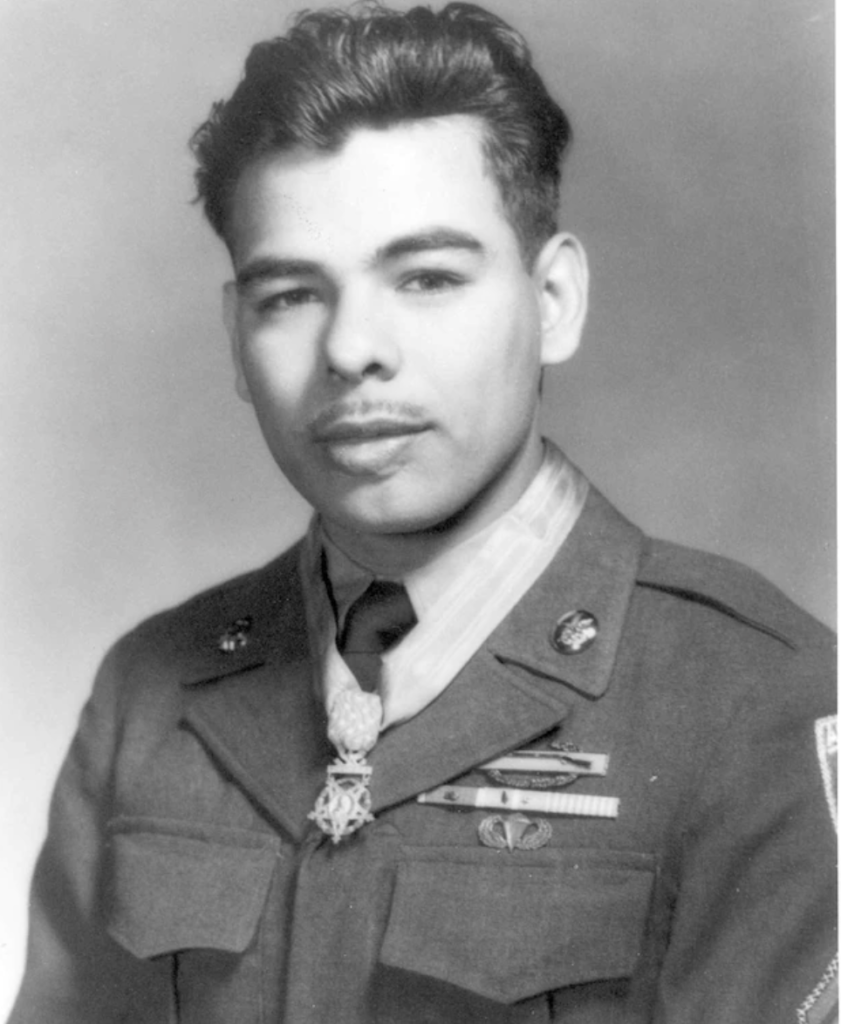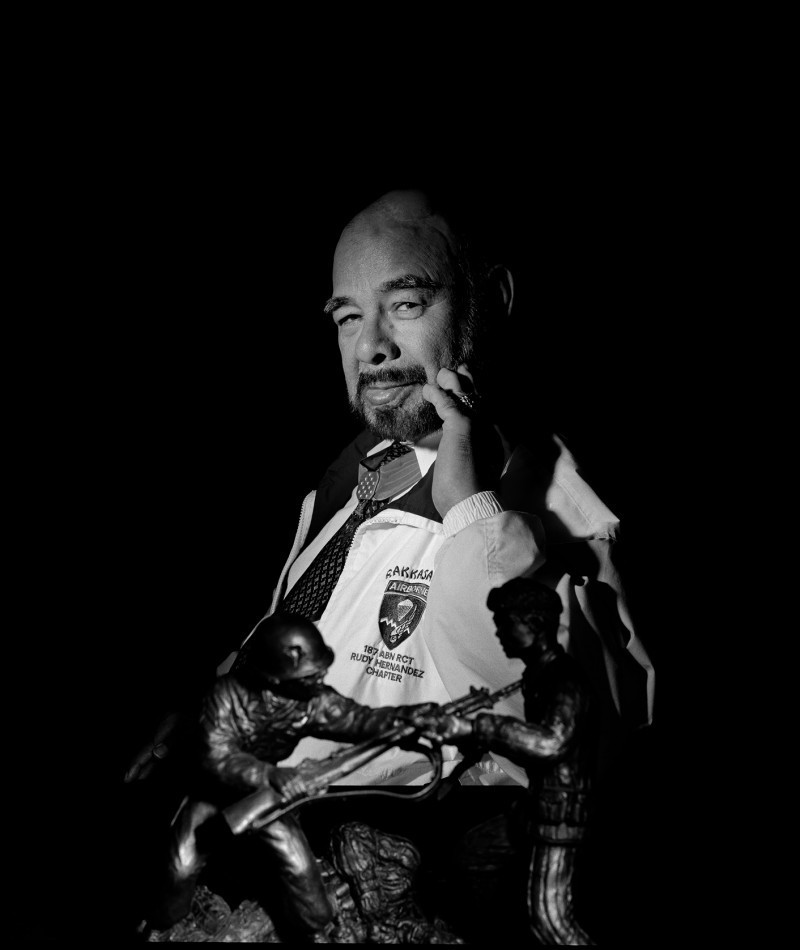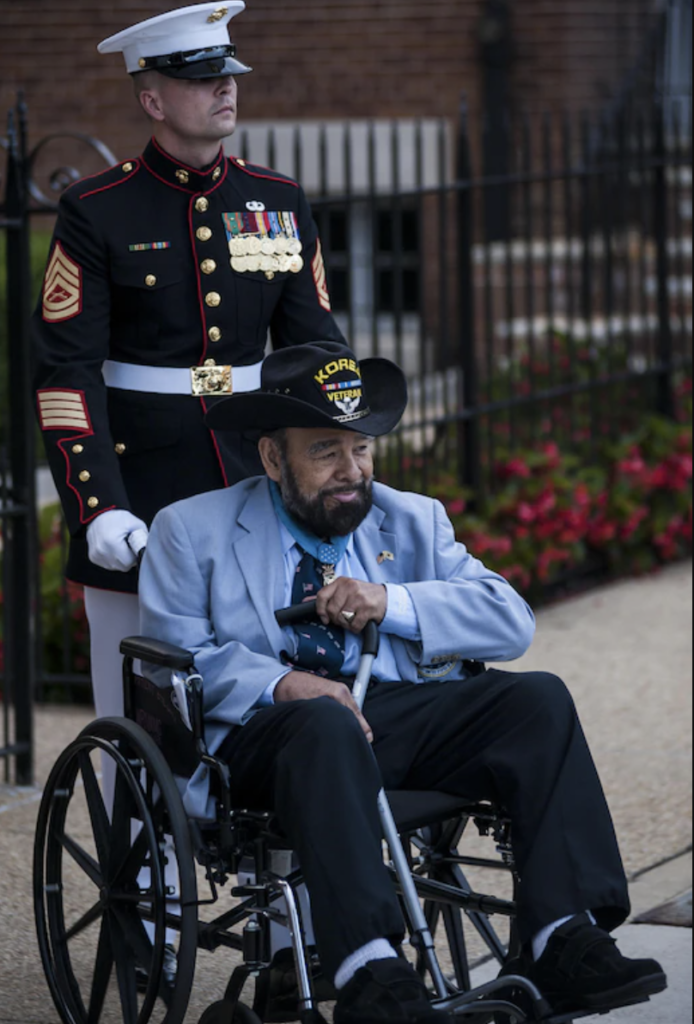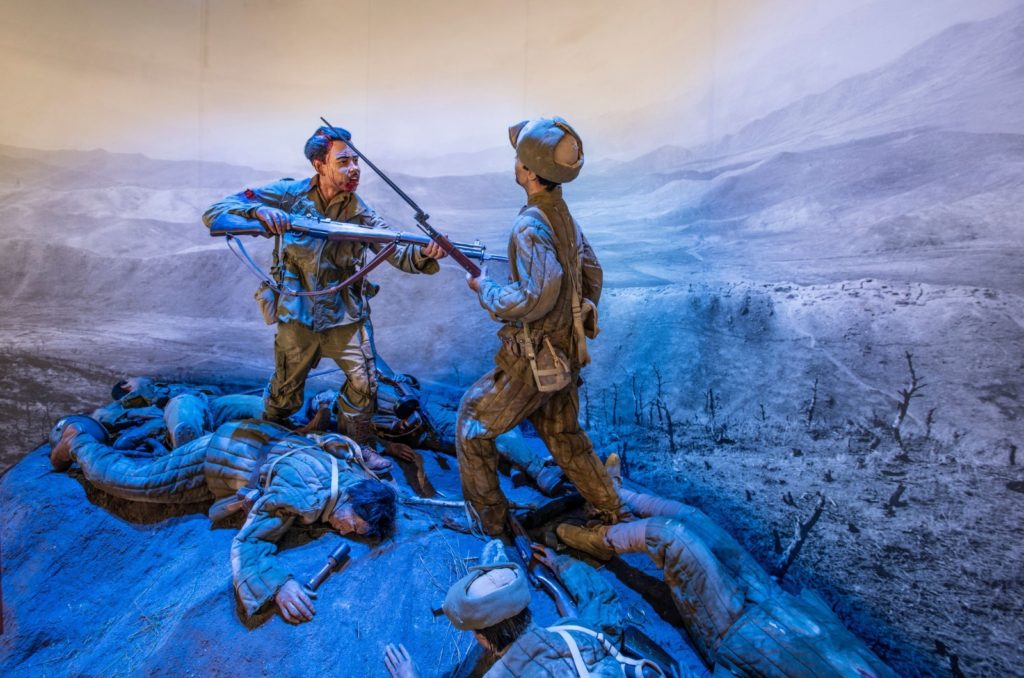Korean War Spotlight: The Story of Corporal Rudy Hernandez
Corporal Rodolfo Pérez “Rudy” Hernández (April 14, 1931 – December 21, 2013) was a United States Army soldier who received the Medal of Honor, America’s highest military decoration, for his actions on May 31, 1951, during the UN May–June 1951 counteroffensive in the Korean War. To learn more about this hero’s amazing story, continue reading below!
Growing Up
Hernández was born April 14, 1931, in Colton, California, to parents who immigrated from Mexico. At just eight years old, he left school to pick crops to help provide for himself, his brother and two sisters.
By the time Hernández was a teen, World War II was over and many veterans had returned home. There were not many options to earn an income, as a teenager. To continue bringing in money for his family, he joined the Army when he turned 17. Hernández volunteered to be a Paratrooper and was eventually assigned to Company C, 2nd Battalion of the 187th Airborne Regimental Combat Team. Inevitably, his unit was sent to Korea.

Heroic Actions
On May 31, 1951, Hernández’s platoon was defending its position on a hill near Wontong-Ni, Korea when they were attacked by a much larger enemy force. When his platoon came under attack and his comrades were forced to withdraw due to lack of ammunition, Hernández, although wounded by a grenade, continued to fire at the enemy until a ruptured cartridge rendered his rifle inoperative. He then rushed the enemy, armed only with a rifle and bayonet. He killed six assailants before falling unconscious from grenade, bayonet, and bullet wounds; however, his heroic action halted the enemy advance and enabled his unit to counterattack and retake the lost ground.
Once the area was secure, the men from Hernández’s unit found him surrounded by dead enemy fighters. He was so badly wounded that his comrades initially thought he was dead and started to put him in a body bag before one of them noticed his hand moving. The head wound Hernández suffered had sheared off part of his skull, paralyzing his right side. Additionally, a bayonet had nearly ripped off his jaw, and he had to relearn to walk, speak, and write.
Hernández was still recovering when he received the Medal of Honor from President HarryTruman at a White House ceremony on April 12, 1952, two days before he turned 21. By then he was able to speak a few words again, but his brother, Gilbert, had to help him walk and communicate during the ceremony.
Hernández’s Medal of Honor citation reads as follows:
Corporal Hernandez, a member of Company G, distinguished himself by conspicuous gallantry and intrepidity above and beyond the call of duty in action against the enemy. His platoon, in defensive positions on Hill 420, came under ruthless attack by a numerically superior and fanatical hostile force, accompanied by heavy artillery, mortar, and machine-gun fire which inflicted numerous casualties on the platoon. His comrades were forced to withdraw due to lack of ammunition, but Cpl. Hernandez, although wounded in an exchange of grenades, continued to deliver deadly fire into the ranks of the onrushing assailants until a ruptured cartridge rendered his rifle inoperative. Immediately leaving his position, Cpl. Hernandez rushed the enemy armed only with rifle and bayonet. Fearlessly engaging the foe, he killed six of the enemy before falling unconscious from grenade, bayonet, and bullet wounds, but his heroic action momentarily halted the enemy advance and enabled his unit to counterattack and retake the lost ground. The indomitable fighting spirit, outstanding courage, and tenacious devotion to duty clearly demonstrated by Cpl. Hernandez reflect the highest credit upon himself, the infantry, and the U.S. Army.

After Recovery
Hernández spent years going in and out of hospitals for his injuries. After he left the Army, he studied Business Administration for three years at Fresno City College. Later, Hernández got married, had three children and became a counselor in Los Angeles for the Veterans Administration, now known as the Department of Veterans Affairs.
After retiring from the VA in 1979, he moved to Fayetteville, North Carolina, near the Fort Bragg. Unfortunately, Hernández never regained the use of his right arm. He later received several other military awards, including the Purple Heart.
On December 21, 2013, Corporal Rudy Hernández passed away at 82 years old. He is buried in the Sandhills State Veterans Cemetery.

Exhibit at the ASOM
Before passing, Hernández helped the ASOM create a life-size diorama of his actions on Hill 420.
The picture below depicts the Corporal Rudy Hernández exhibit at the U.S. Army Airborne & Special Operations Museum, and was made in-house by our talented museum staff. It will always act as a testimony of the valor and bravery Corporal Hernandez showed that day.




